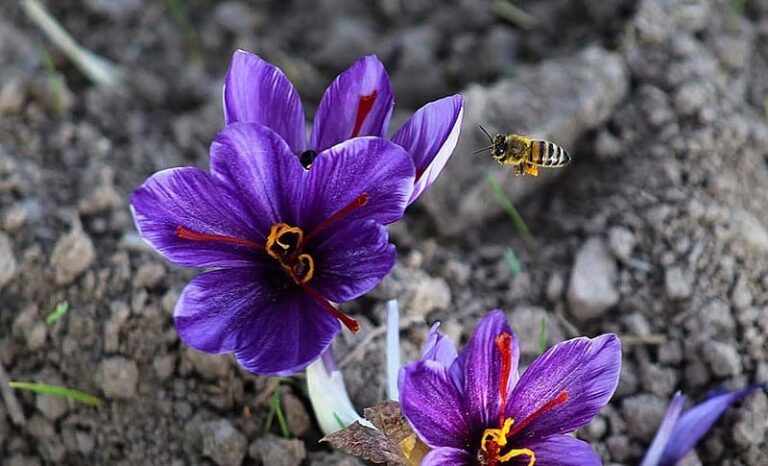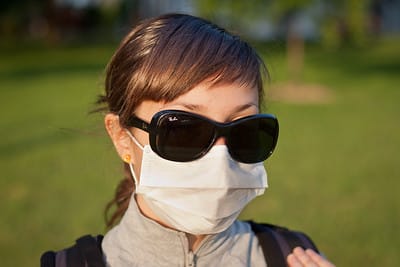
What are the benefits of Kumkumadi tailam ? What are some of the ingredients used in this classical Ayurvedic formulation? how to use kumkumadi oil? Could there be any side effects if we use the product on the wrong skin type? These are some of the questions we have attempted to answer in this authoritative guide that helps you decode the many many benefits of kumkumadi tailam. This post aims to give you authentic information to help you understand if this is the right ayurvedic skin serum for you, and how to craft a good skin care routne with this product. This blog post has been written to answer the questions asked commonly by Krya’s customers – we seek to demystify and explain the big picture behind Kumkumadi tailam. This post will explain the history behind this formulation, the dravyas that go into it, who it suits, and what conditions it is not suitable for. It will end with a brief piece on 2 of the new Krya facial oil serums which are excellent options to consider when you seek an ayurvedic facial oil / ayurvedic facial serum. What is Kumkumadi Tailam? Who formulated it and for what condition? Kumkumadi tailam is an ancient, classical ayurvedic skin oil formulation that is now gaining popularity among many companies which promote luxurious Ayurveda. This formulation is being marketed as an ultimate, all-purpose Ayurvedic skin oil to solve ALL skin problems. Costs of this product are also going through the roof, with some companies selling 12 ml for close to Rs.2500 (around 2 lakh rupees per liter!) This post aims to cut through this hype and educate about the real benefits of Kumkumadi tailam and who should be using it. Read on. In classical Ayurveda, many hoary formulations exist which according to Indic […]

A common question we get asked at Krya is about healthy eating timings & habits to follow and meal choices at each time. Today, the media is charged with advice on nutrition and the importance of developing healthy eating habits. Often, these so-called studies also become quite contradictory, and we naturally start looking for some genuine and time tested guidance on on ahara (food) and ahara niyama (dietary practices to observe). A key part of ahara niyama (or healthy eating habits) in Ayurveda is to identify the proper/healthy time to eat. This influences our capacity to digest food and extract nutrients from the food. In fact, choosing the correct time to eat each meal has the same effect on our health as choosing what to eat. In other words, we should spend the same amount of time planning when to eat as planning what to eat. In this post, we are going to see why Ayurveda pays so much attention to meal timing and how this is a key part of developing healthy eating habits. Planning healthy eating schedule: Different doshas influence different dayparts Ayurveda tells us that each day is divided into 4-hour dayparts. Each of these dayparts is connected to the slow rise, peaking, and then falling of a particular dosha in our body. The strength of the surge in the dosha depends upon the movement of the Sun. For example, if there is sunshine during the kapha period, the effect of kapha will be slightly reduced. Similarly, if there is good sunshine, say during a pitta part of the day, pitta will be much more aggravated due to the influence of the Sun. In order to take advantage of these natural surges in a particular dosha, we are advised to do certain activities during certain parts of […]

According to Ayurvedic seasonal guidelines, Vasanta / spring is now here – so we must all be following Vasanta Ritucharya – modified seasonal guidelines for Spring. If you have already begun to sniffle, sneeze and look desperately for tissues, this season change may have already caught you unawares. One of the most powerful concepts in Ayurveda medicine is the concept of Ritucharya – seasonal regimens to be followed to naturally balance the changes in your doshas due to the change in climate and season. As we have seen in other posts on Ritucharya and Dinacharya, following daily living guidelines or Dinacharya and adjusting these guidelines in every season, or Ritucharya are 2 key ayurvedic cornerstones to good health. When we regularly follow the guidelines of Dinacharya and Ritucharya and also ensure that our choice of Ahara (food) and the way we prepare and eat this food is according to our prakriti, we ensure we are in a state of harmony and balance. This is the Ayurvedic concept of preventive health care. Ayurveda: unique concept of preventive health care Ayurveda’s goal is to prevent the formation of disease by following certain guidelines of good living. This is best described by Acharya Charaka in his Sutra Sthana shlokas: “Swasthasya Swasthya Rakshanam Aaturasya Vikara Prashamanam Cha” He explains that the goal of medicine (Ayurveda) is to rejuvenate and preserve the health of the healthy and then to alleviate diseases in the ill. This order of first tending to the healthy and then treating the sick is specific to Ayurveda. It explains why so much of Ayurveda is primarily focused on health giving regimens rather than disease treatment . This emphasis on preserving health is why Dincharya and Ritucharya regimes (regimes for daily living and special regimes to follow in specific seasons) come first […]
Due to the high use of electronic devices, and excessive eye engagement, many of us commonly face eye strain & eye fatigue. We have recently been receiving a lot of queries on tackling eye fatigue and improving vision through Ayurveda. So we have re-written and expanded one of our earlier posts on this subject. This post will explore how you can easily & visibly reduce eye fatigue & eye strain with Ayurveda . Do you have eye strain? Do you constantly feel eye fatigue? Do you develop headaches after a long bout at your computer? Are you experiencing premature greying and hair dryness? Do your eyes feel dry, scratchy and itchy? You could be experiencing computer vision syndrome / computer related eye strain. Eye strain is a real and wide-spread problem today, which affects both children and adults. For several hours every day, we stare at electronic screens across phones, tablet, TV and computers. As we continually use our eyes for subtle / sookshma purposes, we strain the minute eye muscles and do not allow them a chance to recover or relax. So we are all affected with eye strain to varying degrees. The symptoms are blurred vision, double vision, dry eyes, headaches, eye pain, neck strain, eye-irritation and eye watering. The factors that induce eye strain are the number of hours of screen-time, the size of the screen, the strength of your vision, light levels and posture. Causes for Eye Strain as per Ayurveda : It is astonishing that our ancient Ayurvedic texts are able to give us a rationale behind a seemingly modern problem. Acharya Sushruta tells us that all Netra Rogas (diseases of the eye), occur due to the following causes: Imbalance of hot and cold ( Ushnabhitaptasya) leading to eye strain When the body heat […]
Artificial Intelligence & machine learning in non-human systems is an accepted reality now. If it seems incredible that some human jobs could be replaced by AI, then even more incredible is natural intelligence, which is all around us but often not appreciated. An excellent example of natural intelligence is the interaction of a good Ayurvedic Ubtan or bodywash with your skin. Natural Intelligence for your Skin In the Ayurvedic system, a herb & grain based powder is the ideal recommendation to cleanse skin correctly. for clean, healthy and radiant skin. (they also recommend that you regularly apply a good skin oil pre-bath to balance aggravated doshas and nourish the skin) All the natural orifices of the body like the ears , eyes , nose, axillia, genital organs , skin pores (sweat) and scalp secrete waste material called “mala” , throughout the day and night. If this “mala” is not removed properly, the body loses its health and appearance of well being. This is one very important reason why a “Snana” is recommended as the first act of the day and is considered to be very beneficial. The 3-Level cleansing process of a Ubtan & Body-wash Powder Soaps use a purely surfactant method of dissolving all the oils and dirt on the surface of your skin , which are then removed as you pour water. The Krya Ubtans & Body-wash powders work by combination of gentle exfoliation , natural surfactants and adsorption. The Ubtan powder is first made into a paste with water and then this herb paste is gently rubbed on the skin. This paste adsorbs excess oil, dead cells and dirt from your skin and then leaves it fresh and clean, as you pour water to wash off the mixture. Because of the powder format and the quality of […]
A pitta imbalance is responsible for many skin and hair conditions we see today like premature greying, hair thinning, heat rashes, acne, etc. Pitta imbalance is also the cause behind gastritis, GERD, IBS and high Blood Pressure. Whenever we see signs of dosha imbalance reflected in skin and hair, it makes sense to correct the diet so we do not further overload the body. When these diet modifications are adopted ALONG with good quality ayurvedic oils and choornas, and external products and Dinacharya practices are followed, we can see a good improvement in the skin and hair condition. It can also positively impact internal issues as well. Dravyas and Spices which are pitta channelizing: In the first part of this series on Balancing Pitta through food, we saw how introducing certain Rasas (tastes) into the food, helped balance aggravated Pitta dosha. Apart from this, aggravated Pitta always means that Agni is not channelized properly in the body. Aggravated Pitta dosha can travel and irritate other organ systems like skin, hair etc, as the Fire in the body is TOO high. Therefore, an important part of keeping Pitta in check is to channelise the flow of Fire (Agni) in the body. This makes the difference between an out of control forest fire which how aggravated Pitta dosha can be visualised vs a steadily burning , lamp , which represents Pitta in balance. Dravyas and spices that are pitta channelizing help rein in and control Agni, improving the ability of Pitta dosha to work in the body and enhance metabolism and nutrient extraction while eating. This is why reining in Pitta is very tricky – we cannot abruptly cool, freeze or totally bring down Pitta in the body as it is vital for digestion, metabolism , warmth and […]




